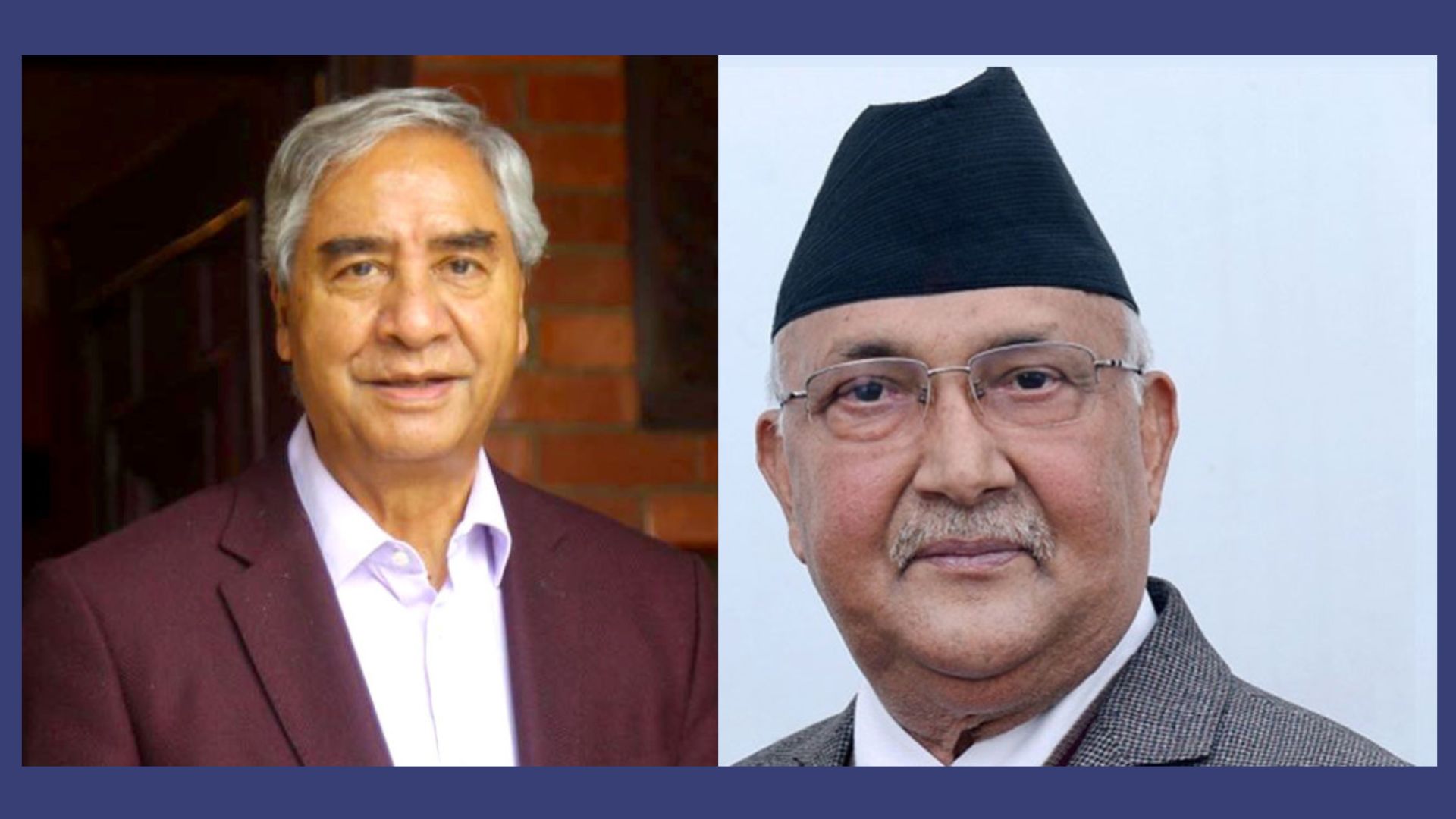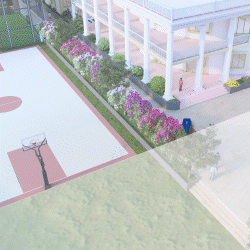Why does Padmarg need Kinlock?
We use Google Cloud Translation Services. Google requires we provide the following disclaimer relating to use of this service:
This service may contain translations powered by Google. Google disclaims all warranties related to the translations, expressed or implied, including any warranties of accuracy, reliability, and any implied warranties of merchantability, fitness for a particular purpose, and noninfringement.


After February 7, 2007, the people's revolution that had been brewing against the royal regime for about a decade came to an end and political events turned in a different direction. The years after the historic People's Revolution were completely transitional and many political events took place.



After the first general election in 2015, BP Koirala became the Prime Minister after the Nepali Congress won a clear majority. After about nine years of tug-of-war between the political parties and the monarchist power, there was a deep sense of obligation to fulfill the aspirations of the general public towards the first general election and the temporary government formed after that.
2016, After the formation of the BP Koirala-led government on 13th June, the interim government has moved forward with its important action plan, in which seven important tasks have been mentioned. In the seventh point, 'expansion of transport' was mentioned. The road network was at a very low level. In 2016, Prime Minister Koirala launched an ambitious road-building project - 'RTO (Regional Transport Organization) Road'.
was not less than the current 'projects of national pride', that project. Probably, before the revolution of 2007, Koirala had collected the route connecting the eastern Terai through Dumja of Sindhuli, his ancestral land, hoping that it would prove to be a milestone for the development of Nepal! After 2016, the work of the initial phase of that road had already started. Raja Mahendra made a political coup on December 1, 2017, when the work-initiation was about to take off with the concept of RTO Road. Throughout the Panchayat period, the construction of the road reached Pilsen amidst the neglect of the immediate system, which was a 'misfortune' for the development of Nepal.
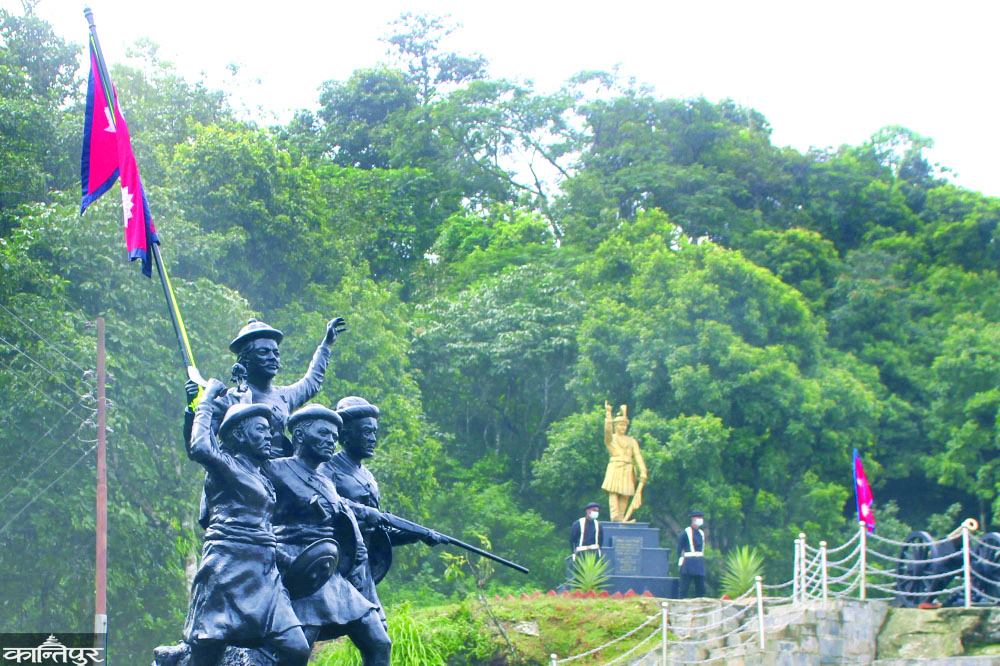 Photos: Rajkumar Karki/Kantipur
Photos: Rajkumar Karki/Kantipur
After the multi-party system was restored at the end of 2046, a government was formed under the leadership of Nepali Congress leader Girija Prasad Koirala in the general elections held in 2048. The work started when the current government decided to start the 'RTO Road' which was in a state of 'chal na chul' for about 32 years.
The road, built with the financial/technical support of the Japanese government, was completed in 2071 and handed over to the Nepalese government and named - 'BP Highway'. During the construction of the BP highway, the old footpaths were followed in some places, while in some places, roads were constructed through new routes. At the same time, the very old road (from Sindhuli's tea plantation to Dhungrebhanjyang) was diverted through Pipalbhanjyang in West Mohada and connected to Dhungrebhanjyang.
deserted old footpath
After the BP highway was diverted to Pipalbhanjyang via Chiabari, the old footpath of Chiabari-Dhungrebhanjang became desolate and deserted. For about two-and-a-half centuries before that, a major part of the footpath (Chiabari-Sindhuligarhi footpath) which connected the Eastern No. 2 and 3 (Ramechhap, Dolakha, Okhaldhunga) with the Central and Eastern Terai (Chiabari-Sindhuligarhi Footpath) of the immediate Rana period was losing its historical heritage. Along the trail lay the upper reaches of the Gwang River as well as the famous rise of Siruvani, a rise that has witnessed many ages. Those who climb Siruvani have their own stories.
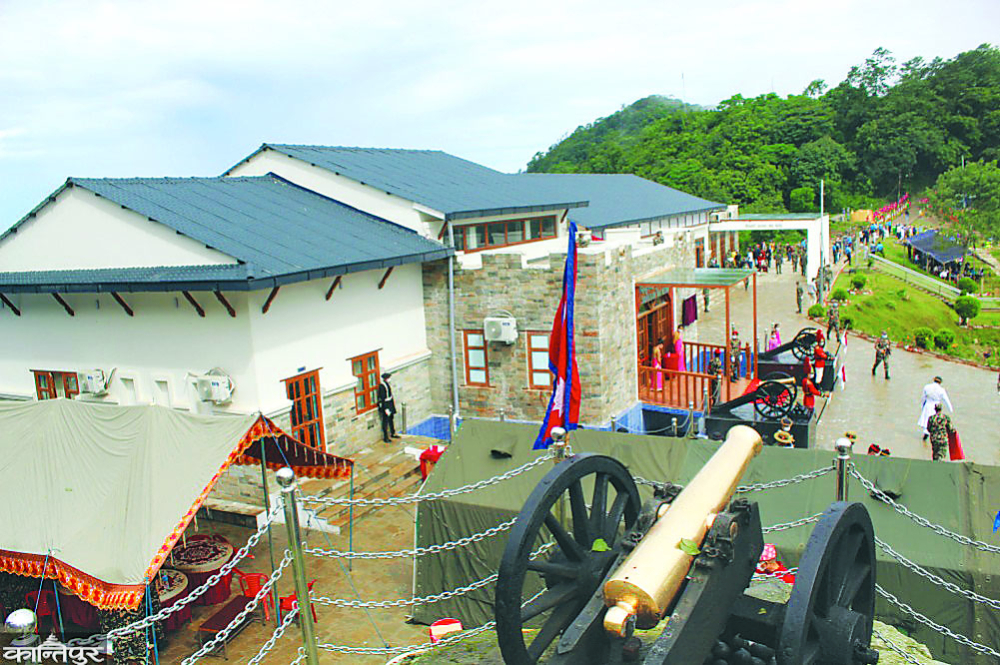 After the promulgation of the new constitution on October 3, 2072, the country adopted the 'New Kanchuli' of the federal structure. The local levels (metropolitan, sub-metropolitan, town and rural municipality) have been given the authority vested in the Singha Darbar for years. Local levels started making many decisions according to their rights.
After the promulgation of the new constitution on October 3, 2072, the country adopted the 'New Kanchuli' of the federal structure. The local levels (metropolitan, sub-metropolitan, town and rural municipality) have been given the authority vested in the Singha Darbar for years. Local levels started making many decisions according to their rights.
After the local elections held in 2074, the Kamalamai municipality wanted to emphasize the development of the tourism sector by naming the Chiabari-Sindhuligarhi footpath, which had been completely deserted for a decade and a half, as 'Kinlak footpath'. After naming the footpath after Captain Kinlock, the leader of the British army defeated by the Gorkhali army during the Nepal-British war, the controversy started. Earlier, this dispute remained dormant, but now it has fully surfaced. The question is being raised, "Why was the footpath from Chiabari-Sindhuligarhi named after Captain Kinlock of the British army who was defeated by the brave Gorkhali army?"
Returning to history
At that time, the Gorkhali king Prithvi Narayan Shah's army was intensifying the valley conquest campaign. V.No. In 1823, when he was exerting all his strength to capture Kirtipur, the then king of Kathmandu, Jayaprakash Malla, not only knew that the Gorkhali army was gaining dominance over Kirtipur, but he was in fear and tragedy with the estimate that the Gorkhali army would attack Kathmandu at any time. Malla felt it necessary to take some measures to stop Prithvi Narayan Shah's valley conquest campaign.
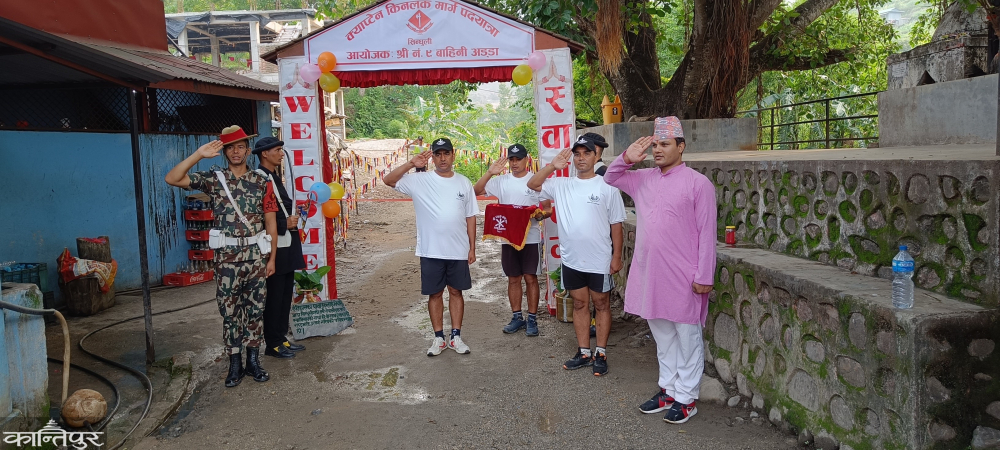 At that time, the Capuchin priests were boldly preaching Christianity in the Kathmandu Valley and the East India Company also its business. When Prithvi Narayan Shah conquered Kathmandu, two things were likely to be blocked, Jayprakash Malla said. One, the expedition of the Capuchin priests and the other the trade expansion of the East India Company. For this reason, the priests suggested to Jaiprakash Malla to send a letter to the East India Company to stop the campaign of the Gorkhali army.
At that time, the Capuchin priests were boldly preaching Christianity in the Kathmandu Valley and the East India Company also its business. When Prithvi Narayan Shah conquered Kathmandu, two things were likely to be blocked, Jayprakash Malla said. One, the expedition of the Capuchin priests and the other the trade expansion of the East India Company. For this reason, the priests suggested to Jaiprakash Malla to send a letter to the East India Company to stop the campaign of the Gorkhali army.
At that time the Governor of the East India Company was Harry Berlest. Malla had no direct access to Governor Berlest and he sent two emissaries to Beitia with a request for military assistance to Golding, the British consul at Beitia (Vihar), including Ramdas Fakir, a well-known Kashmiri Muslim who was trading in Kathmandu, and Ramdas Fakir, who had been imprisoned by the Gorkhali blockade while coming to Kantipur for pilgrimage. Those envoys said, "If Britain gives military aid to Jayaprakash Malla, the Gorkhali army can be chased away and the East India Company will be able to get a big financial benefit from that."
Consul Golding sent Jayaprakash Mall's emissaries to Thomas Rumbold, the British commander in Patna. Golding recommended Rumbold through these envoys and wrote, 'The Malla kings have asked us for military assistance, which seems morally and militarily necessary. If military aid is sent, the company government will also get a big financial benefit.
At that time, the East India Company used to cut Khotesalla trees from the mountain forests of Nepal. The company had been buying Salla trees in collusion with the Sen Rajas of Chaudandi state. The khotesalla tree was used to make the ship's masts (the mid-sticks used to fasten the sails of the ships) and the barnacles from the khota. Golding predicted that if Prithvi Narayan Shah won over the Kathmandu valley, he would extend his dominion over other states of Nepal and the trees of Khotesalla would be closed.
 Prithvi Narayan Shah came to know through a special source that Jayaprakash Malla has requested military assistance from the East India Company. And the Shah sent a letter to Rumbold wishing to meet him at Patna if he would be protected by the company and the borders of his kingdom. When Rumbold sent the letter to Governor Berlest, the letter was discussed in the company's 'Subject Committee'. The 'Subject Committee' decided to send military aid to Jayaprakash Malla and not to assist Prithvi Narayan Shah. In the letter sent by Berlest to the Shah, it was mentioned that the Shah should not attack the valley.
Prithvi Narayan Shah came to know through a special source that Jayaprakash Malla has requested military assistance from the East India Company. And the Shah sent a letter to Rumbold wishing to meet him at Patna if he would be protected by the company and the borders of his kingdom. When Rumbold sent the letter to Governor Berlest, the letter was discussed in the company's 'Subject Committee'. The 'Subject Committee' decided to send military aid to Jayaprakash Malla and not to assist Prithvi Narayan Shah. In the letter sent by Berlest to the Shah, it was mentioned that the Shah should not attack the valley.
The Company's 'Subject Committee' directed British Army Captain George Kinlock to proceed to Patna to defeat the Gorkhali army. On August 26, 1767, the army led by Captain Kinlock marched from Patna to Janakpur. The Company's 'Subject Committee' decided to send 2,400 Hindustani troops and some military officers under the leadership of Captain Kinlock to fight against Prithvi Narayan Shah's army. The army led by Captain Kinlock advanced from Sindhuli Madhi towards Khurkot. When the British army under the leadership of Kinlak climbed up the hill of Siruvani through tea fields and reached Dhungrebas (Dhungrevanjyang), around 500 Gorkhali troops stationed under the leadership of Vanshu Gurung attacked the British army.
From Dhungrebas to Bhanjyang, the British troops were hardly troubled by the climate, because the British troops who came through Darbhanga, Janakpur and Madhi, the climate up to Siruvani Phedi was favorable for them. However, the 700-strong Gorkhali army led by Vansraj Pandey and Virbhadra Upadhyay at Pauwagadhi (Aad) was ready to defeat the 'Firangi army'. The same army adopted the strategy of attacking the enemy (British army) from the front. After all, that place became established as the place to defeat the British army led by Kinlock. It was natural that the climate of the place as well as the geographical difficulty did not support the British army. There is no doubt that the Gorkhali army's military skills have become an auxiliary factor in defeating the British army.
The British army led by Captain Kinlock suffered a shameful defeat in Sindhuligarhi area. As 2400 British troops came to fight the war, Kinlock with his 700 surviving troops went to Khundaghat of Makwanpur. On reaching Khundaghat, after receiving information that the Gorkhali army was stationed at Hariharpur Gadhi, Kinlak proceeded to Rautahat and Bara and from Bara he sent a letter to Rumbold from Behora who had to be defeated in the battle of Sindhuligarhi. This year was the event of 1824.
At the time (1824), when the East India Company was in full control, the British Empire seemed to have plenty of grounds to colonize Nepal under the pretext of sending 'military aid' to the then king of Kantipur, Jayaprakash Malla. After tasting the bitter taste of defeat in the Sindhuligarhi War, the East India Company did not dare to look down on Nepal. v. No. After Prithvi Narayan Shah's victory over Kantipur in 1825, political, social, cultural, strategic and many other scenarios changed and Nepal always avoided being subordinated to the British Empire.
The defeat of the British army led by Captain Kinlock, who came to challenge Prithvi Narayan Shah's kingdom expansion campaign, was a strong lesson for the British Empire at that time. The battle of Sindhuligarhi also became a dynamic lesson to free the then British Empire from the comment that victory can be achieved in almost all the wars fought by them.
The issue of naming the footpath after the British army and its leader Captain Kinlock, who suffered a shameful defeat in the Sindhuligarhi war, has become complicated at the moment. However, it should not be complicated. Instead of saying 'Kinlak Footpath', it seems appropriate and relevant if the local level shows activity towards developing the Chiabari-Sindhuligarhi footpath by naming the footpath after the subject or historical figure reflecting the social and cultural aspect of that area.
Features of the footpath
The controversial 'Kinlak footpath' named by the local Kamalamai Municipality and the Nepali Army about three years ago covers a distance of about 8 kilometers from Chiabari to Sindhuligarhi. After BP Highway was opened, Teabari has come to be known as 'Muglin' of that highway. As famous as 'Muglin' was once for hotels after the opening of the Prithvi Highway, now San Muglin in Teabari looks no less. The vehicle owners going from Kathmandu to eastern Nepal have been choosing tea plantations for food. From the same tea plantation, after proceeding along the banks of the Gwang (Gaumati) river, comes Siruvani Fedi. Siruvani Fedi was bright, commercially, before the opening of the BP highway.
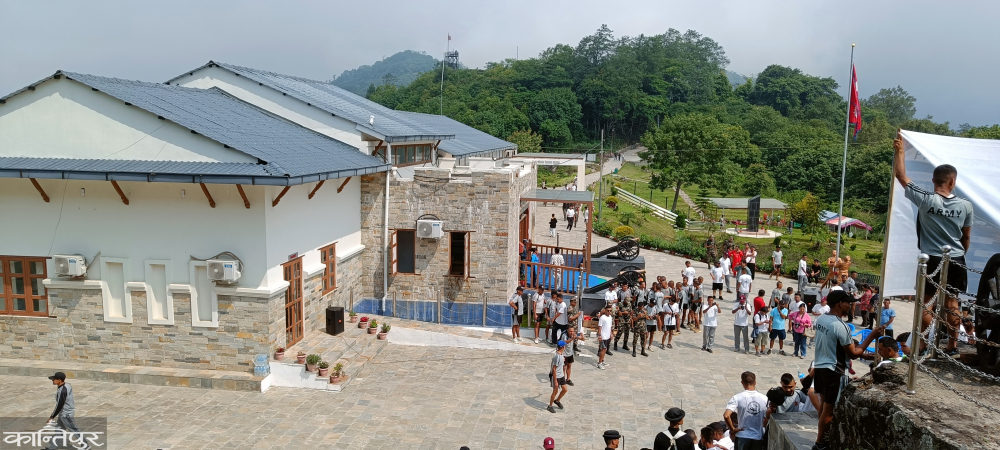 8-10 hotels, all arrangements of food, cool environment, in a small place, the charm of Fedi was different. Most of the Batuas did not want to sweat in the heat of Siruvani without tasting Fedi's food. Because the main part of the trail was a long and tiring climb of Siruvani. Siruvani's rise was not and is not spectacular. It feels cool even while climbing up the hill covered with trees like Var, Peepal, Sami etc. along with perennial sal, saj, karam, katus and at every point of the hill. About 45 minutes after the forest area, the normal settlement begins and after that settlement comes - the small Peepal square, from where the lovely Chure range to the south, the Sindhuli Madhi and Terai plains also come into view.
8-10 hotels, all arrangements of food, cool environment, in a small place, the charm of Fedi was different. Most of the Batuas did not want to sweat in the heat of Siruvani without tasting Fedi's food. Because the main part of the trail was a long and tiring climb of Siruvani. Siruvani's rise was not and is not spectacular. It feels cool even while climbing up the hill covered with trees like Var, Peepal, Sami etc. along with perennial sal, saj, karam, katus and at every point of the hill. About 45 minutes after the forest area, the normal settlement begins and after that settlement comes - the small Peepal square, from where the lovely Chure range to the south, the Sindhuli Madhi and Terai plains also come into view.
In the past, the delicious food of Siruwani Fedi on that footpath, curd and battered chickpeas in dhiki, elephants' fatigue, the sweet water of Sami Chautara located at the last point of Siruwani village, the delicious jand sold by the local Magar community women near Thute Peepal, the cold water of Dhungrebhanjang and the taste of Aad. Dahi-chiura is not forgotten for the current generation. The current generation may find such reference stories. Now there seems to be a lot of ground to develop that path and move forward in a new way by reviving these local dishes and tastes of the past. When Padmargis enjoy the local taste, neither the name of 'Kinlak' nor any others are remembered. What they remember are the characteristics of the trail, the climate and the local flavors as well as the local cultural aspects.
in Bisauni The dispute about the date of victory of the Gorkhali army over the British army has not been settled yet. One of them has been considering October 15 and the other as October 24. Kamalamai Municipality has been observing the 24th of October and on that day, the municipality and the Nepali Army have also been celebrating 'Sindhuligarhi Vijayotsav'. Ironically, on the one hand, the municipality has been celebrating the day of the defeat of the British army as a 'Victory Festival' and on the other hand, the route has been named 'Kinlak Padmarg' after the captain of the British army who was defeated in the Sindhuligarhi War. What kind of dual role is this?
With the naming of 'Kinlak Padmarg', voices of dissatisfaction have started pouring out from the local community. It is natural for Nepalis who have never been enslaved by the British Empire to feel resentment and anger when the footpath is named after a captain of the British army who was defeated in the Battle of Ghadi. With the naming of 'Kinlak Padmarg', this case has been defined by the locals as 'disrespect to public sentiment'.
 प्रकाशित : असार १५, २०८१ ११:२३
प्रकाशित : असार १५, २०८१ ११:२३
 २७.१२°C काठमाडौं
२७.१२°C काठमाडौं











